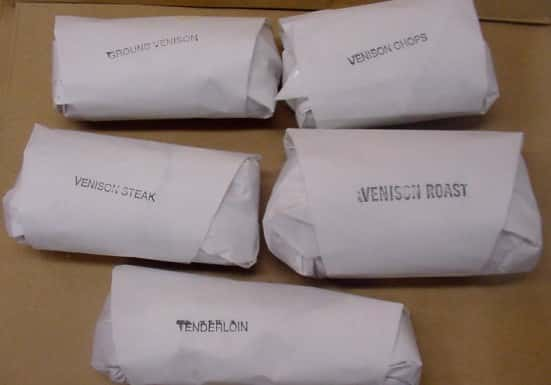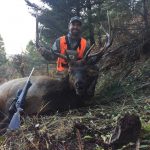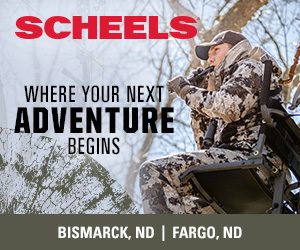
Plain Powerful. A handful of white-paper-wrapped venison samples go a long way in connecting neighbors and a non-hunter with the hunting experience. DEO Photo by John Bradley.
By: John Bradley
It started as a light-hearted joke from my neighbor as I was unpacking my car from a hunting trip.
“You seem to be spending a lot of gas money just to come home empty handed, you know the grocery store is only a couple blocks away, right?” Not having a quick comeback, I said, “I like to be out in the field, and I’d take venison over anything in the grocery store.”
My neighbor, like most Americans, doesn’t hunt. That doesn’t mean she is opposed to hunting, but she was not exposed to hunting as a child. According to U.S. Fish and Wildlife Service Only 6 percent of Americans are hunters, a staggering statistic. While it seems as if you see big trucks with hunting-related decals everywhere you go, especially at your local Wildlife Management Area, hunters are in fact quite a minority. We hunters only maintain our privilege to hunt by the grace of the remaining 94 percent of the population who doesn’t.
We are fortunate that approximately 80 percent of the non-hunting public approves of hunting under most ethical conditions, but it’s our responsibility to ensure generations after us are granted this opportunity and approval too.

Over the month of September, I would sneak away early on Fridays and come back Sunday afternoons, usually with nothing to show for my efforts, except tired legs. My neighbor now interested in my hunts, would chat and ask questions of me as I pulled gear out of my car. Her general curiosity prompted me to ask if she had ever had venison or any other wild game.
Already knowing the answer, I offered her some packages from last year’s elk and deer for her and her family to try. I rooted through my freezer for packages of steaks and roasts that I thought would be the easiest to prepare and wrote her a note with tips on preparation and cooking methods.
When I delivered the packages, my neighbor wanted to hear the story of the hunt. I shared with her the story of my Montana elk hunt. The miles trekked on public ground, the sleet and wind my buddy and I walked through to get away from the roads, the excitement of getting within 150 yards of the bedded bull elk, the flurry of emotions that occurred when I walked up to the animal, and the two long days of packing the meat out.
As I told my story, my neighbor’s comprehension of the term “hunter” seemed to change. My neighbor may never pick up a gun or buy a hunting license and that’s okay. Her acceptance of a few packages of venison to prepare on her own confirmed the impact of our conversation. And because of that conversation, I think she understands that as a hunter, I view hunting as a privilege that comes with a great responsibility to the wildlife I pursue and to the habitat they rely on.
Every hunter likely has a neighbor, a friend, or a family member who is a non-hunter, if not several. Hunting-related conversations with some or all of these folks tend to be avoided for fear of getting into a debate that may turn sideways. However, sticking our collective heads in the sand and avoiding these types of conversations is the opposite approach we should be taking with the non-hunting public.
Not every conversation with a non-hunter will result in creating an ally but sharing our stories with a little deer meat diplomacy, can help cement our future as hunters.
John Bradley is the Executive Director of the North Dakota Wildlife Federation and a Dakota Edge Outdoors contributing writer.

